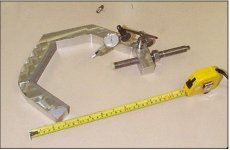I am buying some equipment for a research lab that partially works on the design and testing of electric motors. As new motors are developed the shafts will need to be aligned on the test dynamometers. Are there recommended shaft alignment tools? Ideally I would like to find something under $1,000.
It seems that on the high end are the laser alignment tools like
Fluke 830 Laser Shaft Alignment Tool - Way out of my price range
Fluke 830 Laser Shaft Alignment Tool
SKF TKSA series - Unknown pricing but probably out of my price range
SKF Shaft alignment tools
Is there a recommended dial indicator based alignment tools? Such as
Dial Indicator Alignment Tools - Mr. Shims
or
Model #20RA Shaft Alignment System Specs Page
It seems that on the high end are the laser alignment tools like
Fluke 830 Laser Shaft Alignment Tool - Way out of my price range
Fluke 830 Laser Shaft Alignment Tool
SKF TKSA series - Unknown pricing but probably out of my price range
SKF Shaft alignment tools
Is there a recommended dial indicator based alignment tools? Such as
Dial Indicator Alignment Tools - Mr. Shims
or
Model #20RA Shaft Alignment System Specs Page


